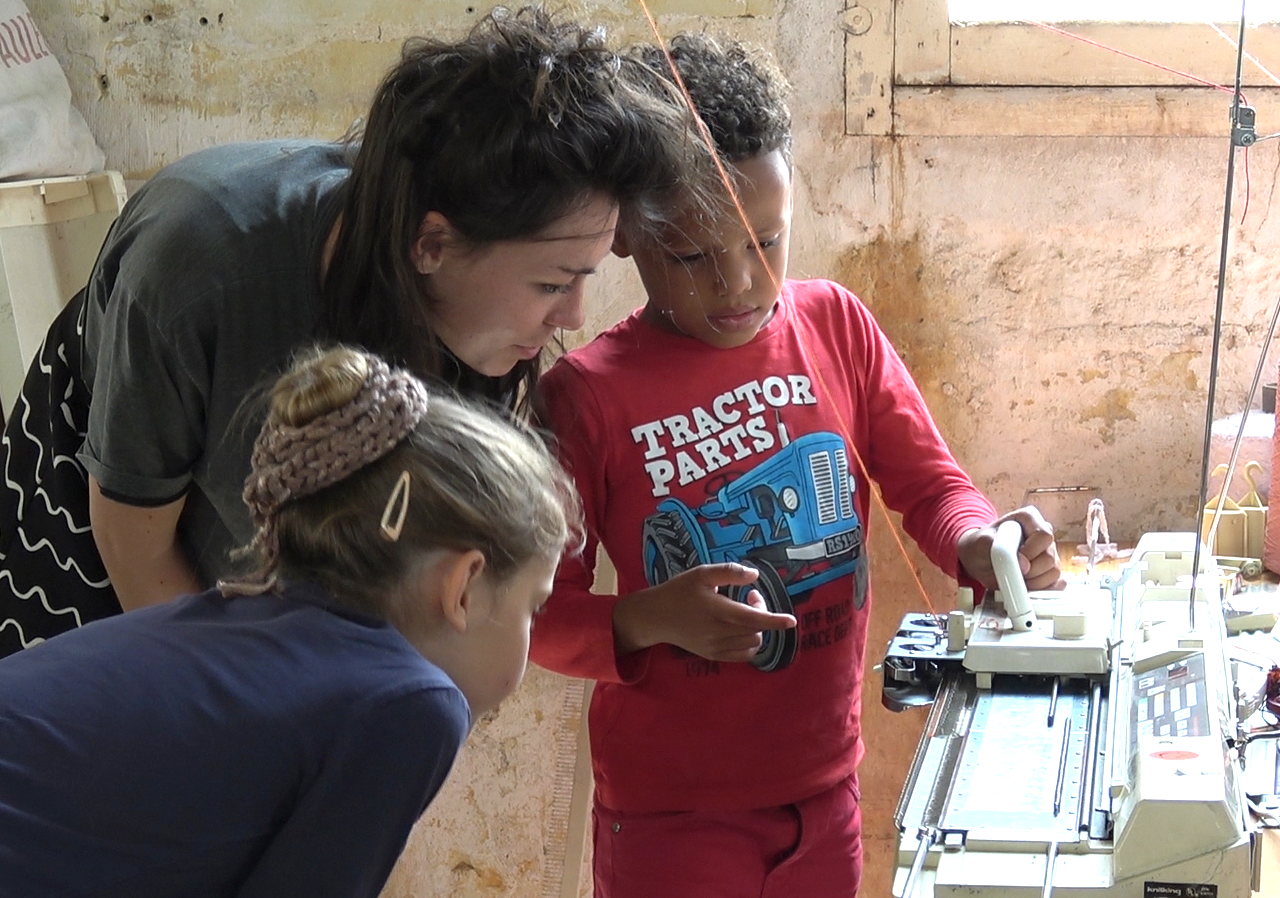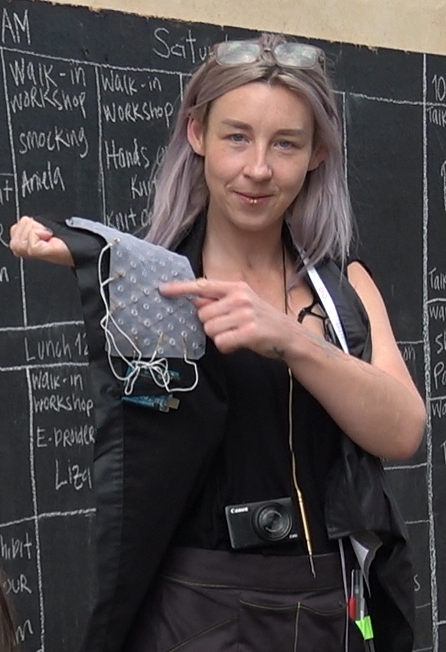 In 2017 I participated in the e-Textile Summer Camp at the Paillard Centre d’Art Contemporain & Résidence d’Artistes in Poncé sur le Loir, a small village 214 km from Paris.
Rachel Freire insisted that I joined this panel discussion chaired by Dr. Becky Stewart:
In 2017 I participated in the e-Textile Summer Camp at the Paillard Centre d’Art Contemporain & Résidence d’Artistes in Poncé sur le Loir, a small village 214 km from Paris.
Rachel Freire insisted that I joined this panel discussion chaired by Dr. Becky Stewart:
"The History of Computing and Weaving, the Consumer Society and Data Democratisation"
with Becky Stewart, Audrey Briot, Rachel Freire and Adrian Freed
July 22 17:00- 18:00



I have researched the history of electronics, computing and e-textiles, but I thought I was likely going to be a "hair in the soup"–as the French say–as I don't have a portfolio of e-textile works that comes anywhere near the quality of that of my co-panelists. I reflexively took the role of respondent and prompted my copanelists into elaborating on their work and curiosities. I first noted that their work shows how we can rescue the worn out adjective "digital" by celebrating a continuity between the "digital" and "numerical" aspects of quipu (and it's ancient analogs) and contemporary e-textile projects - which very often involve interactions with our digits in gloves or interacting textile surfaces.
My second response was an improvisation on some philosophical work I had been doing on entrainment and entanglement.
I am grateful to Hannah Perner Wilson, a key instigator in the Summer camps, for encouraging me write these ideas down.
 This note is a kind of writing where I am often told to "unpack" the ideas or integrate a line of argument. Thankfully Hannah found value in this writing without me addressing those concerns. She saw potential in it as part of a "zine" for woolpunkers, a pataphysical take on e-textiles inventors.
This note is a kind of writing where I am often told to "unpack" the ideas or integrate a line of argument. Thankfully Hannah found value in this writing without me addressing those concerns. She saw potential in it as part of a "zine" for woolpunkers, a pataphysical take on e-textiles inventors.
So, instead of unpacking the text, I illustrate it below in the style of a gloss.
